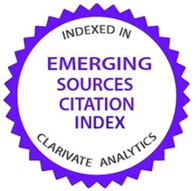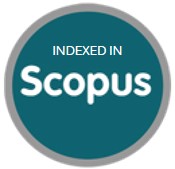La primera guerra iraní-israelí: antecedentes e impactos estratégicos de la Guerra del Líbano (2006)
DOI:
https://doi.org/10.21830/19006586.995Palabras clave:
guerra híbrida, Hezbolá, Medio Oriente, Relaciones internacionales, terrorismoResumen
Este artículo explora las relaciones entre Irán e Israel desde su inicial alianza estratégica como países no árabes, gracias a la cooperación sobre intereses comunes, pasando por el deterioro de esta alianza y el surgimiento de la rivalidad en el contexto de la Guerra Fría, hasta la Guerra del Líbano en 2006. Se busca entender los antecedentes de este conflicto, sus impactos estratégicos y sus implicaciones en términos de la amenaza híbrida que ha representado el fortalecimiento de Hezbolá como ejército cuasiestatal con el respaldo de Irán. Pese a no compartir fronteras comunes ni tener, en consecuencia, disputas territoriales, la Guerra del Líbano en 2006 constituyó la primera guerra entre Israel e Irán, y ha sido determinante en la evolución de las amenazas híbridas en la región.
Descargas
Referencias bibliográficas
Al-Salmi, A. (2019, 3 de octubre). Soleimani reveals details of role he played in the 2006 Israel-Hezbollah War. Asharq Al-Awsat. https://bit.ly/3YnfnUy
Ansari, A., & Aarabi, K. (2019). Ideology and Iran’s Revolution: How 1979 changed the world. Tony Blair Institute for Global Change.
Bialer, U. (1985). The Iranian connection in Israel’s foreign policy: 1948-1951. Middle East Journal, 39(2), 292-315.
Biddle, S. (2011). Non State warfare: The military methods of guerrillas, warlords, and militias. Princeton University Press.
Caforio, G. (2012). The concreteness of asymmetric war: Fragments of experience. Connections, 11(3), 21-40. https://bit.ly/3mrJU6b
Chamie, J. (1977). The Lebanese civil war: An investigation into the causes. World Affairs, 139(3), 171-188.
Clarke, C., & Smyth, P. (2017). The implications of Iran’s expanding Shi’a foreign fighter network. CTC Sentinel, 10(10), 14-17. https://bit.ly/3ZmdkBe
Cordesman, A., Sullivan, G., & Sullivan, W. (2007). Lessons of the 2006 Israeli-Hezbollah War. Center for Strategic and International Studies.
DeVore, M., & Stähli, A. (2015). Explaining Hezbollah’s effectiveness: Internal and external determinants of the rise of violent non-State actors. Terrorism and Political Violence, 27(2), 331-357. https://doi.org/10.1080/09546553.2013.808194
Ezzedine, N., & Azizi, H. (2022, 14 de julio). Iran’s increasingly decentralized axis of resistance. Texas National Security Review. https://bit.ly/3YpvTmE
Filkins, D. (2013, 23 de septiembre). The shadow commander. The New Yorker. https://bit.ly/3L26iNW
Furlan, M. (2022). Israeli-Iranian relations: Past friendship, current hostility. Israel Affairs, 28(2), 170-183. https://doi.org/10.1080/13537121.2022.2041304
García, M. (2018). Dilemas de seguridad en la nueva realidad estratégica israelí. Universidad Complutense de Madrid.
Hirst, D. (2010). Beware of small States: Lebanon, battleground of the Middle East. Nation Books.
Human Rights Watch. (2007, 28 de agosto). Civilians under assault: Hezbollah’s rocket attacks on Israel in the 2006 War. https://bit.ly/3ZL7ngT
Kaye, D. (2003). The Israeli decision to withdraw from southern Lebanon: Political leadership and security policy. Political Science Quarterly, 117(4), 561-585. https://www.psqonline.org/article.cfm?IDArticle=14728
Kramer, M. (1998). Origins of terrorism. Psychologies, ideologies, theologies, states of mind. En W. Reich (Ed.), The moral logic of Hizballah (pp. 131-157). Woodrow Wilson Center Press.
Lieberman, E. (2012). The Israel-Hezbollah rivalry. En Reconceptualizing deterrence: Nudging toward rationality in Middle Eastern rivalries (pp. 172-210). Routledge.
McCarthy, R. (2006, 28 de agosto). Hizbullah leader: We regret the two kidnappings that led to war with Israel. The Guardian. https://www.theguardian.com/world/2006/aug/28/syria.israel
Marcus, R. (2018). Israel’s long war with Hezbollah: Military innovation and adaptation under fire. Georgetown University Press.
Michalak, T. (2013). The Palestinians and the outbreak of civil war in Lebanon (1975). Asian and African Studies, 22(1), 112-130. https://bit.ly/3ZLkPRU
Parsi, T. (2005). Israel-Iranian relations assessed: Strategic competition from the power cycle perspective. Iranian Studies, 38(2), 247-269. https://doi.org/10.1080/00210860500096329
Parsons, G. (2008). Israel versus Hezbollah 2006: Assessing Israeli strategy. Air War College.
Regehr, E. (2015). Disarming conflict. Zed Books.
Rubin, U. (2006). Hizballa’s rocket campaign against Northern Israel: A preliminary report. Jerusalem Issue Brief, 6(10). https://www.jcpa.org/brief/brief006-10.htm
Schwartz, A., & Wilf, E. (2020). The war of return. How Western indulgence of the Palestinian dream has obstructed the path to peace. All Points Books.
Shaikh, S., & Williams, I. (2018, 5 de julio). Hezbollah’s missiles and rockets [reporte]. Center for Strategic and International Studies. https://www.csis.org/analysis/hezbollahs-missiles-and-rockets
Smith, B. (2007, 30 de octubre). The Quds force of the Iranian revolutionary guard [informe de investigación]. House of Commons, International Affairs and Defence Section.
Soltaninejad, M. (2018). Iran and Egypt: Emotionally constructed identities and the failure to rebuild relations. Journal of World Sociopolitical Studies, 2(3), 483-506. https://doi.org/10.22059/wsps.2018.69041
Sontag, D. (1999). Withdrawing from Lebanon becomes hot issue in Israeli election. The New York Times.
Zisser, E. (2011). Iranian involvement in Lebanon. Military and Strategic Affairs, 3(1), 3-16. https://bit.ly/3KYA460
Descargas
Publicado
Cómo citar
Número
Sección
Licencia
Derechos de autor 2023 Revista Científica General José María Córdova

Esta obra está bajo una licencia internacional Creative Commons Atribución-NoComercial-SinDerivadas 4.0.

| Estadísticas de artículo | |
|---|---|
| Vistas de resúmenes | |
| Vistas de PDF | |
| Descargas de PDF | |
| Vistas de HTML | |
| Otras vistas | |
























